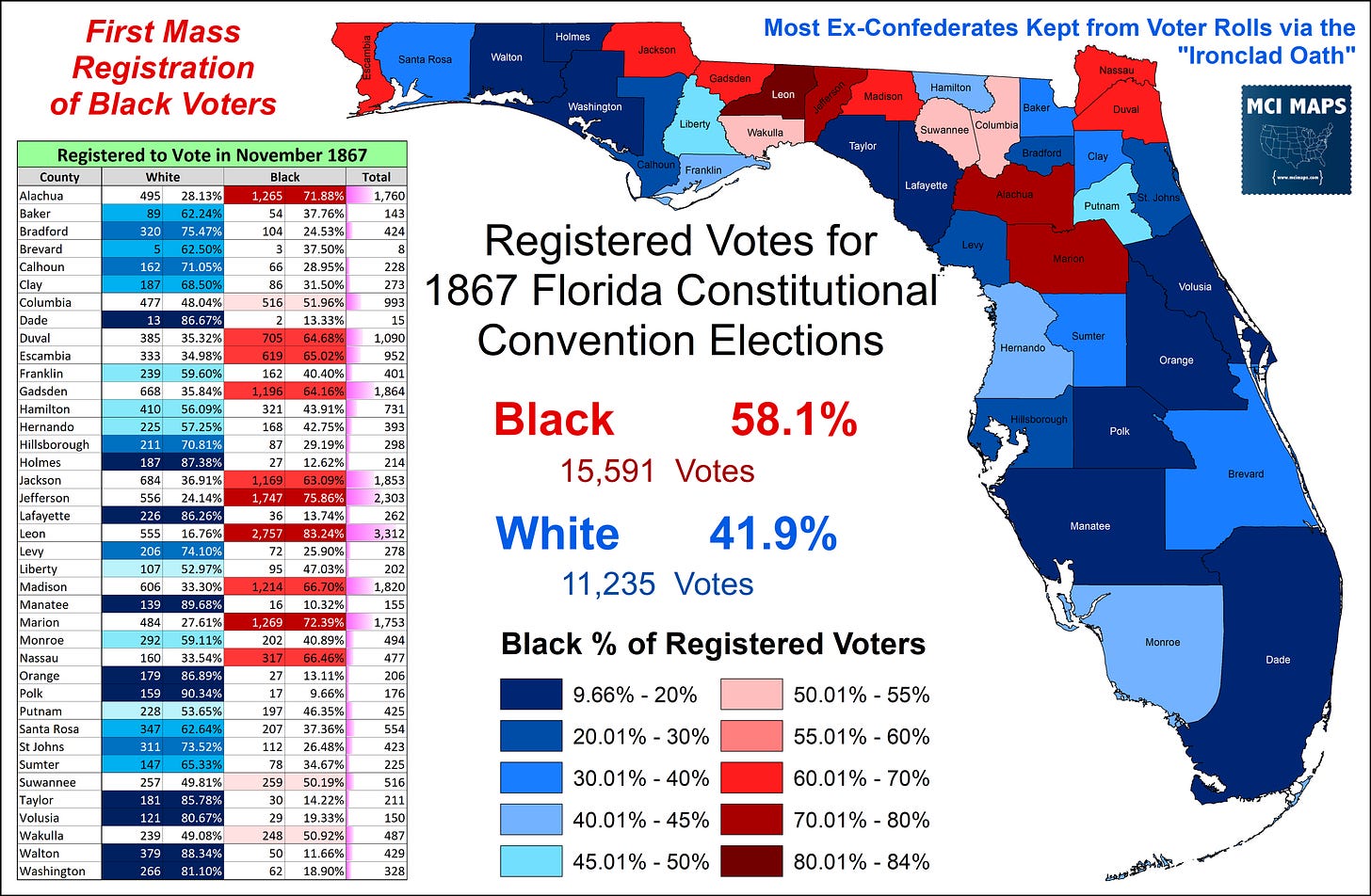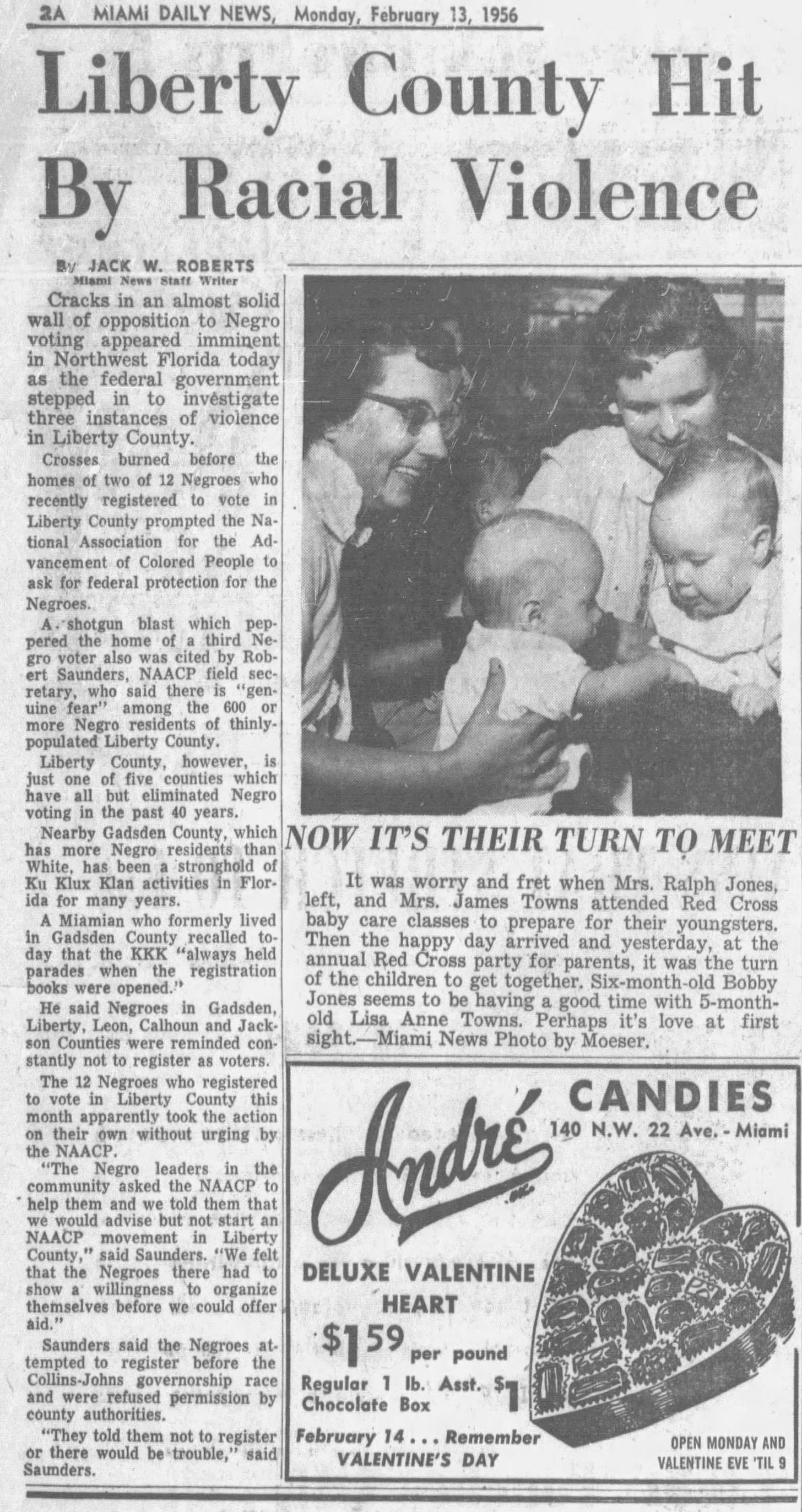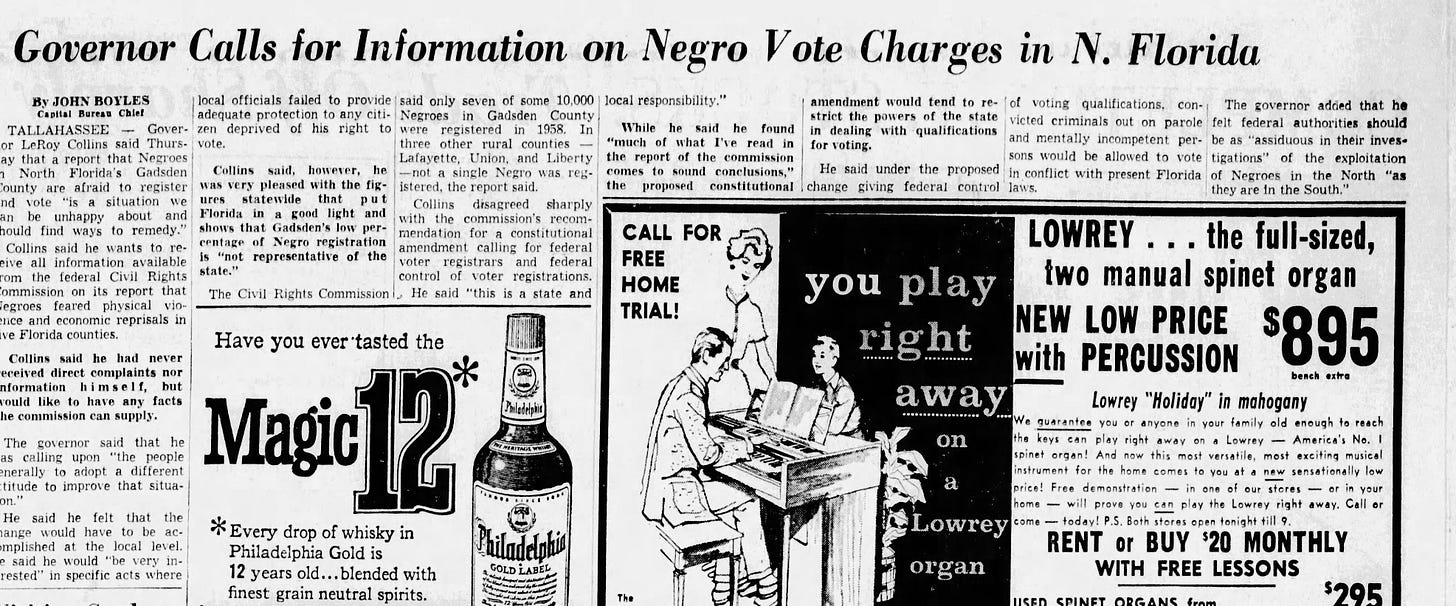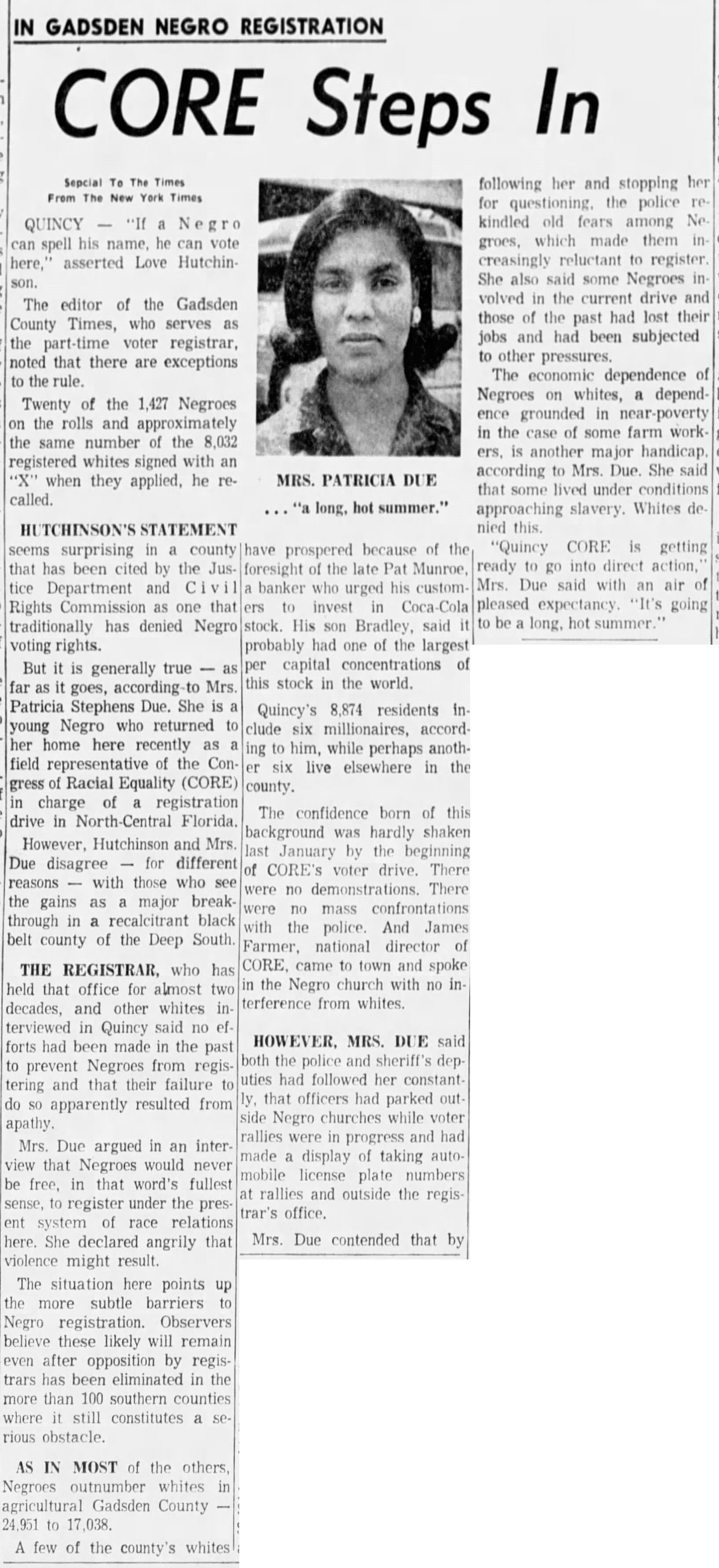Issue #120: How did the 1965 Voting Rights Act Impact Florida?
A surprising history for the region
Today, August 6th, marks the anniversary of Lyndon Johnson signing the 1965 Voting Rights Act into law. This act, a critical piece of the civil rights movement, tore down barriers to voting for millions of Americans, especially in the Jim Crow south.
The bill, initially part of the 1964 Civil Rights Act but removed to ensure that legislation’s passage, was fiercely opposed by southern politicians. When the final version of the act passed the House, the roll call vote showed a clear regional divide.
In light of the anniversary of this act being signed into law, I wanted to look at what the passage of the VRA meant for Florida and its history of black registration efforts.
Backstory in Florida
Just a few months ago, I dug into Florida immediately after the Civil War. Like many southern states, Florida under reconstruction saw black voters engaged and participation in elections. However, like the rest of the south, that promise of civic freedom would not last. You can read my story of that saga here.
When Florida went to the polls in 1867 to elect delegates for a reconstruction constitution referendum, black voters outnumbered whites. However, after betrayals by white carpetbagger Republicans and increasing white confederate violence, power fell firmly into Democratic hands by 1876. Several years later, a Jim Crow constitution was passed in an election that saw black voters intimidated and kept from the polls.
The constitution passed in 1886 would be in place until 1968. It notably allowed Florida to pass a poll tax, which not only suppressed black voters but also poor whites. Of course, like many poll taxes, exemptions were given to ensure white voters could cast ballots. The result was a collapse in GOP support. The state would also implement white-only primaries at the end of the century. With this, Florida, like much of the south, settled into an era of white democratic rule.
The poll tax would actually be abolished in 1941, but not for any racially-pure reasons. The abolishment actually was tied with scandals that emerged from candidates bribing voters by offering to pay the tax for them. Due to this, the tax was gone, but black civic engagement largely remained non-existent. In many communities, the efforts of black voters to register was violently suppressed. In other counties, black voters faced subtle pressures to stay out of politics. Of course, on top of this was the fact that few politicians in Florida ran as racial progressives. For most black residents, risking their lives or jobs by getting involved was not worth it.
But as the 1940s and 1950s carried on, civic engagement of black voters began to slowly rise. That was welcomed in some areas, but stopped in others. In 1948, over 7,000 black residents were registered in Dade County. They showed their support for Harry Truman, who’s moves on civil rights in the civil service and army had led to a rebellion from Dixiecrats.
In fact, if you want to read more about the 1948 Election in Dade County, check out my latest Patreon Post, which includes PRECINCT MAPS for the election that year. As a preview, here is how progressive Henry Wallace did in Dade.
See my Patreon to see how black voters delivered for Truman, and how Dixiecrat Strom Thurmond did as well.
Check out the Patreon
By the mid 1950s, black residents were registering and voting in Leon County. In fact, the Leon black community flexed enough muscle that it swung precincts to Eisenhower in 1956 when they backed him over Stevenson. Read more on my Leon Political History here.
Registration and engagement from black voters in Florida continued through the 1950s. But in many communities, suppression remained the name of the game.
Violent and Subtle Suppression
Florida’s issues with black voter registration fluctuated by county. A 1959 report from the Civil Rights Commission in DC found that by that point, 40% of black residents over 21 were indeed registered to vote. In 19 of the counties, it was over 50%. However, several counties had far fewer, with some under 5%. One of those was Gadsden, the lone majority-black county. Reports showed residents were threatened either with violence or the threats of job losses.
Meanwhile, in neighboring Liberty County, threats of violence were much less subtle. Violence actually took place when fewer than 20 black residents tried to register back in the 1956 elections.
Residents in these counties would have little recourse from local officials. With the Liberty County violence, the Sheriff blew off the concerns.
"Somebody just fired a few shots in the air in front of one house and a couple of crosses were burned..... There isn't too much to that"
Liberty Sheriff S.G. Revell
Despite these Jim Crow tactics in several rural counties, black voters continued to galvanize and register. In 1956, there were 148,000 registered black voters. By the 1960 Presidential election, that number had increased to 183,000. It was just concentrated in specific communities.
The efforts to register black voters was aided by the spotlight the DC committee put on suppression efforts. Registers were aided by sympathetic state administration, especially compared to the hardcore segregationists of the deep south. Governor Collins, a racial progressive for the era, took the reports serious and called for investigations.
After Governor Bryant was elected in 1960, registration efforts continued. Bryant was less progressive than Collins, but notably worked to cooperate with Freedom Riders in 1961. Bryant, a southern Methodist, was more of a typical southern white “gentleman” that called for racial harmony but at times did was not aggressive enough - especially during violence in 1964 in St Augustine. That said, Bryant was nothing like the Governors of Alabama or Mississippi, and did not try to stop registration or civil rights protests.
In several of the rural counties, the VRA would be needed to finally aid registration efforts. Liberty and Lafayette had ZERO black registered voters in 1960, while Union, Flagler, Taylor all severely lagged in any meaningful mobilization.
The 1963-1964 Mass Registration Drive
The early 1960s saw major registration drives in several Florida counties. The NAACP and other organizations made major efforts in places like Gadsden County. By 1963, registration efforts were in full swing there. The white leadership continued to maintain “folks could always register” - but we know the truth. On the ground reports show that while there was tensions, the intimidation of the past could not be upheld under such a spotlight.
As a result of these efforts, black registration spiked massively in 1964. The county went from just 300 black democrats to over 4,300 in two years. Registration continued to grow, with black voters eventually overtaking whites.
1964 would prove to be a major milestone for black voting. In 1962, there were 191,000 black voters registered. By 1964, it was 299,000!!!! On a statewide scale, 1964 in Florida is the critical data point, before the VRA came into law.
That 100,000 black voter increase is pretty important when we consider that Lyndon Johnson only won Florida by 43,000 votes.
I don’t have the data on what percent of that 100,000 showed up, but considering this was the height of civic engagement, I venture it absolutely made the difference. Black voters in Florida gave Johnson over 90% of the vote.
Black Republican registration had been 15,000 in 1960, but would continue to fall gradually over the decade. Black voters who began to engage in the process overwhelmingly registered as democrats.
The VRA in Florida and the late 1960s
The 1965 VRA was most critical in two counties, Liberty and Lafayette, where no black residents had been able to register.
In most of Florida’s counties, the effort to suppress black voting was untenable even before the VRA. Granted this was made easier by the fact black voters did not make up even 20% of the state. In areas like Mississippi or Alabama, mass registration would upset the political order in large swaths of the state. Even in many of Florida’s panhandle, black registration would still result in white rule.
Below is black registration in the panhandle from 1958 through 1968. As it shows, the registration increases were especially clustered around 1964, with efforts stalling out later in the decade.
Between 1964 and 1966, several counties saw drops in black registration - though this was often a handful of voters. What it most reflects is a dip in registration drives that fueled 1964. Other counties, like Taylor, saw mass registration efforts in 1962, while Liberty and Lafayette did not see any black voters until 1966.
I was actually surprised about how many counties had black registration before the VRA. I think it would be easy to assume that, at least North Florida, would have been similar to much of the deep south. However, I do believe the statewide leadership being less reactionary than much of the region aided these efforts. National pushes in Florida were met with less broad state-sanctioned violence than other states, allowing the suppression more common in the 1950s and before to be broken.
Registration would remain static, dropping a bit between 1964 and 1970. If we compare county-by-county registration for the decade, 1960 to 1970, there was an overall jump in black registration of 61%. In several counties, this increase was far higher, over 1000% in several counties.
Black voters would continue to galvanize and make their presence felt. The 1970s would continue to see black voter registration increases. By 1974, when racial progressive Governor Rubin Askew won re-election, there would be 340,000 black voters registered. By 1982, it would be close to 500,000.
The Voting Rights Act of 1965 was critical for black voters in a handful of Florida counties. Its effect was FAR MORE important in other areas of the deep south. However, the push for the VRA and voting rights, which began well before 1965, absolutely had an impact. Washington investigations, press coverage, and sympathetic state leaders led to several counties being forced to abandon their efforts to suppress the vote.
Unfortunately, today, these efforts at suppression are ongoing.
















What is the source for the registration figures by race and county? Also, in the future, you should treat the 8-box and secret ballot laws of 1889 and 1895, respectively, as important steps in disfranchisement. See my Shaping of Southern Politics, pp. 91-103. You can now download Shaping for free from my Caltech website.